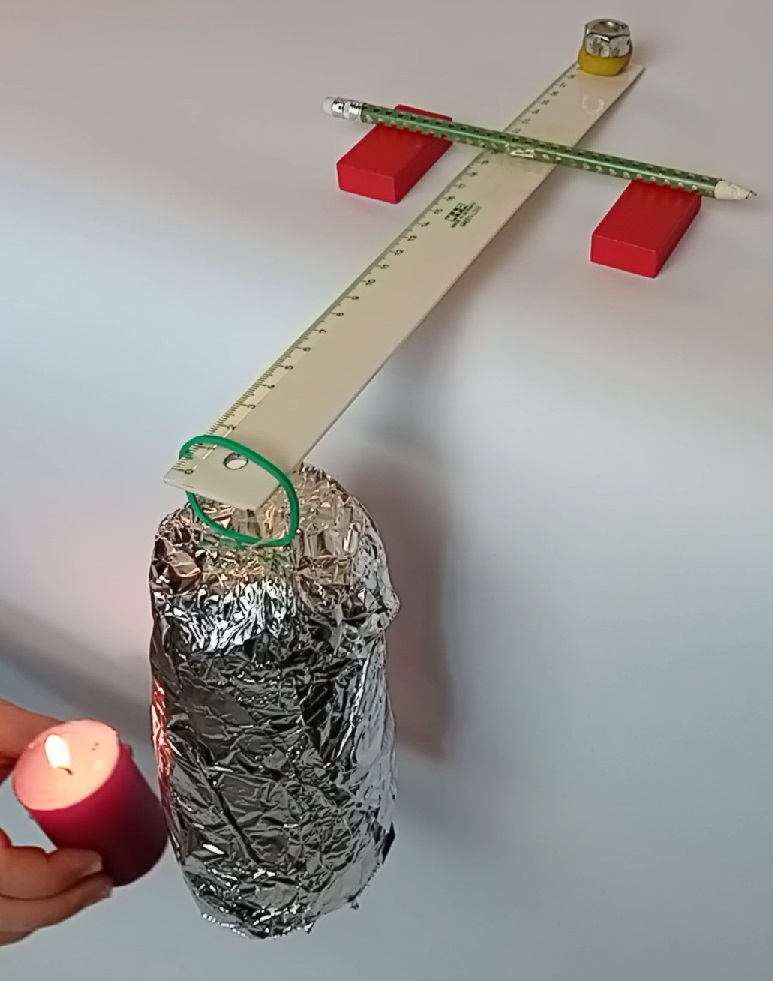177 – Warm air rises
Warmer air weighs less than colder air
Principle of a hot air balloon
Introduction to:
- Expansion of gases when heated
- Equation of state of ideal gases
- Buoyancy in gases
Material:
- Vessel as impression form (approx. 1/2 l, e.g. plastic bottle, drinking glass)
- Aluminum foil, approx. 1/2 m
- Rubber band
- Adhesive tape
- Ruler (approx. 30 cm long)
- Pin (cylindrical, without edges)
- Edition blocks (wooden blocks (cuboid, hard, smooth material) or coins, height approx. 2.5 cm)
- Weights / mass pieces for balancing the scale (e.g. screw nuts, several coins)
- Candle
- Lighter / Match
Setup:
Aluminum cylinder:
- Put the aluminum foil over the container and use it to make a hollow cylinder with a volume of about half a liter
- Attach the rubber ring to it with adhesive tape
Ruler Scale:
- Attach the pen to the ruler with the tape, at about a third of the length
- Place the ruler scale on the support blocks on the edge of a table, and hang the rubber ring with the aluminum cylinder over the longer end of the ruler. The aluminum cylinder should be able to swing freely next to the edge of the table.
- Tare the ruler scale using the weights so that the aluminum cylinder has only a minimal slight overweight.
Execution:
- Hold the candle flame under the opening of the aluminum cylinder.
Observation:
- The scales deflect, i.e. the aluminum cylinder moves upwards.
- If you take the flame away again, the rash goes down.
Tip:
- To check, hang the aluminum cylinder with the opening upwards on the ruler scale, this time the scale does not deflect.
Explication:
- The warm air in the cylinder has a lower density than the surrounding air, so the cylinder experiences lift.
- The warm air in the cylinder contains fewer particles than the colder air that was in it first. So it weighs less.
- In the equation of state of ideal gases pV = NkT which also applies approximately to air, the pressure p and the volume V are constant. Thus, the absolute temperature T is indirectly proportional to the number of particles N.
